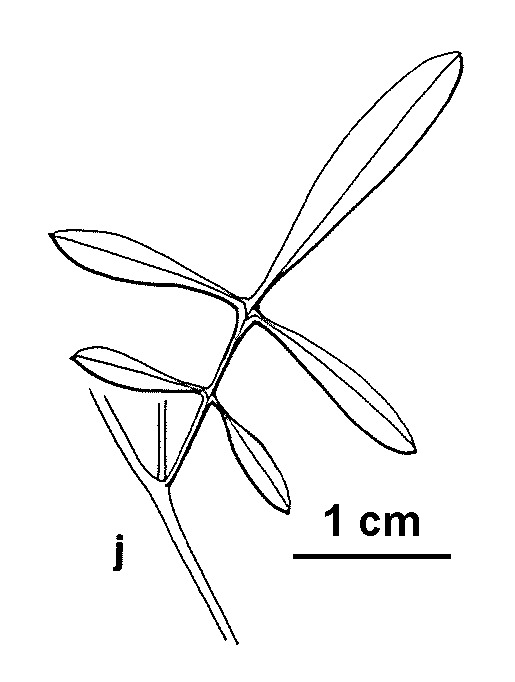Cardamine paucijuga
Turcz.Annual to ?perennial, to 40 cm long, glabrous, taproot persisting, commonly also with fibrous roots; stems slender, erect or trailing. Leaves thin; basal leaves long petiolate, pinnate, rosetted, to 12 cm long, terminal leaflet with cordate base, lateral leaflets petiolulate; cauline leaves several, 2–7(–12) cm long, pinnate with 1–3(–5) pairs of lateral pinnae, often long, pinnae oblong-elliptic to fusiform, mostly entire. Racemes condensed to lax, few–many-flowered; sepals 2.0–2.5 mm long; petals 3–6 mm long, pink or white; mature style to 1.5 mm long. Fruits erecto-patent, c. 30 mm long, 1.0–1.5 mm wide; pedicels 5–20 mm long; seeds c. 1.0–1.2 mm long. Flowers spring.
MuM, Wim, Brid, VVP, VRiv, MuF, GipP, OtP, WaP, Gold, CVU, GGr, DunT, EGL, EGU, WPro, HNF, Strz, MonT, VAlp. All States except NT. Scattered in southern Victoria (e.g. Portland, Major Mitchell Plateau in the Grampians, Nepean state Park and Five Mile Beach at Wilsons Promontory) with 2 records from the north-east (Mt Burrowa, and the Ovens River near Wangaratta); occurs in moist forest and riparian habitats.
Similar in leaf shape to Cardamine moirensis but the terminal pinna of basal leaves larger and with a cordate base, and the leaves with fewer and more often entire pinnae. Flowers in this species are often larger than in C. moirensis, the racemes sometimes laxer and with more flowers, and the styles usually longer. It differs from C. lilacina in having smaller seeds, usually smaller flowers and weaker and leafier stems. Intermediate variants exist between C. paucijuga and C. lilacina and further studies are required to clearly delineate these taxa.
Thompson, I.R. (1996). Cardamine. In: Walsh, N.G.; Entwisle, T.J., Flora of Victoria Vol. 3, Dicotyledons Winteraceae to Myrtaceae, pp. 434–442. Inkata Press, Melbourne.
 Spinning
Spinning



